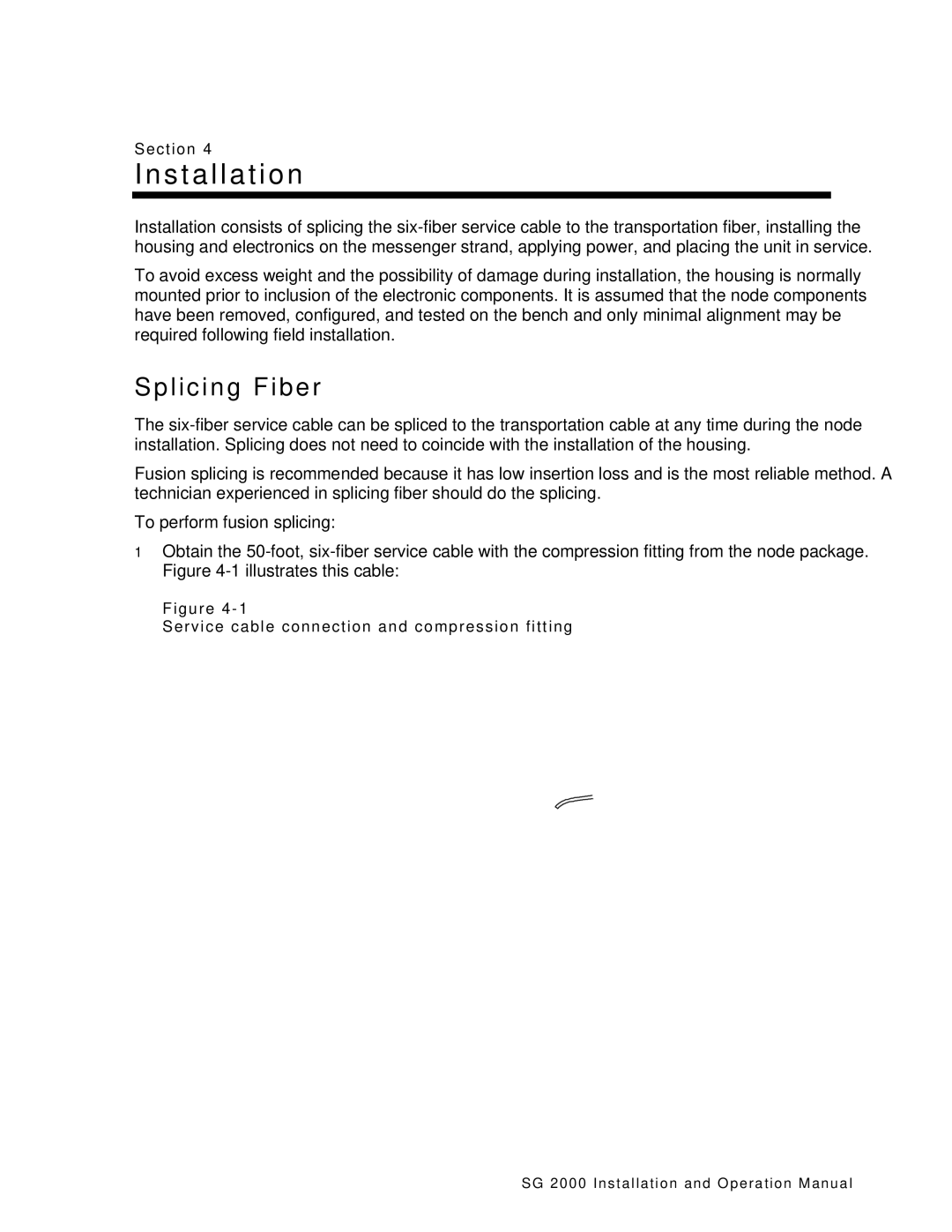
Section 4
Installation
Installation consists of splicing the
To avoid excess weight and the possibility of damage during installation, the housing is normally mounted prior to inclusion of the electronic components. It is assumed that the node components have been removed, configured, and tested on the bench and only minimal alignment may be required following field installation.
Splicing Fiber
The
Fusion splicing is recommended because it has low insertion loss and is the most reliable method. A technician experienced in splicing fiber should do the splicing.
To perform fusion splicing:
1Obtain the
Figure
Service cable connection and compression fitting
39.8” ± 1.5”
Water | Compression | Main | Service | Heat | SC/APC |
seal nut | nut | body | cable | shrink | connectors |
2Splice each fiber according to procedures recommended by the manufacturer of the splicing equipment being used. A
SG 2000 Installation and O peration Manual
